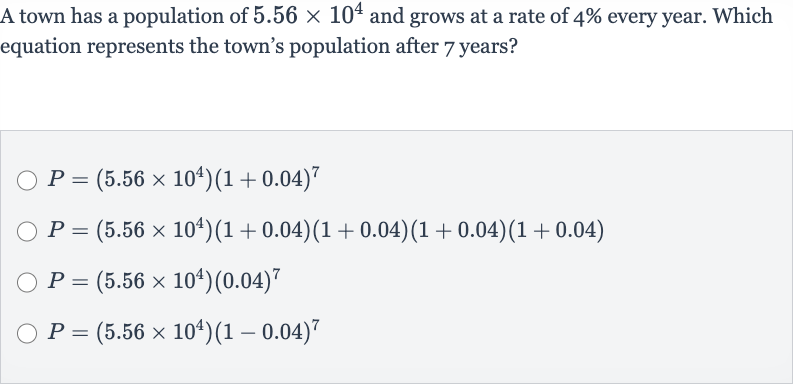Full solution
Q. A town has a population of and grows at a rate of every year. Which equation represents the town's population after years?
- Exponential Growth Formula: To find the population after years with a growth rate of per year, we use the formula for exponential growth: , where is the initial population, is the growth rate, and is the time in years.
- Given Values: The initial population is given as . The growth rate is , which is in decimal form. The time is years.
- Substitute Values: Substitute the given values into the exponential growth formula: .
- Correct Representation: The equation correctly represents the population after years, considering a annual growth rate compounded once per year.
- Evaluation of Options: The other options can be evaluated for correctness:- does not correctly apply the compound interest formula, as it only multiplies the growth factor times instead of .- incorrectly raises the growth rate to the power of instead of applying it as a percentage increase.- incorrectly assumes a decrease by per year instead of an increase.
More problems from Ratio and Quadratic equation
QuestionGet tutor help
QuestionGet tutor help
QuestionGet tutor help
QuestionGet tutor help
QuestionGet tutor help
QuestionGet tutor help
QuestionGet tutor help
QuestionGet tutor help

